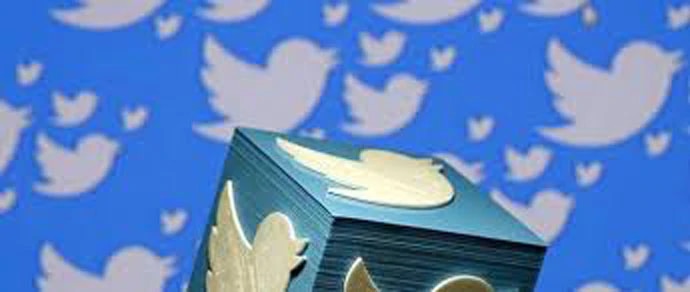Conspiracy theorist Alex Jones’s account suspended for seven days: Is Twitter using sprinklers to battle a blaze?

The platform’s efforts to curb hate speech and abuse, even if well-intentioned, are agonizingly slow.
On August 15, Twitter finally chose to act against Alex Jones, a far-right American conspiracy theorist who runs the website Infowars, after he posted a video asking supporters to get their “battle rifles” ready against rather a wide variety of people and institutions — the Antifa, the "Chicoms", a term he presumably made up to describe “Chinese-Communist operatives, and the mainstream media.

Other Silicon Valley bigwigs, such as Facebook, YouTube, Spotify and Apple, have already banned Jones. But Twitter’s reaction — late, halting, hobbling — is touchingly trusting.
On Periscope, which is owned by Twitter, Alex Jones tells supporters to get their “battle rifles” ready against antifa, the mainstream media, and “Chicom operatives” https://t.co/OBHSFc3ofC pic.twitter.com/ntQbh9IKxz
— Media Matters (@mmfa) August 14, 2018
First, it suspended — not banned — Jones’s own account. Realising a little late that he could, and was, was still tweeting from the Infowars’ account, Twitter suspended that too. But only for seven days. In which period, Jones can still browse the website, just not post more content.
Questioned on this, Twitter CEO Jack Dorsey said: “I feel, you know, any suspension, whether it be a permanent one or a temporary one, makes someone think about their actions and their behaviors.”

So there. That’s Twitter’s strategy. Prevented from tweeting for seven days, Jones will think and reflect, and hopefully emerge a better person.
Jones, to his dubious credit, has theories such as the World Trade Centre attack was “an inside job”, the Sandy Hook school shootings — in which 20 children and six adults were killed — was “fake”, and that Muslims in UK had demanded that the Queen either convert to Islam or leave the country.
Muslims in England are now demanding that the Queen either convert to #Islam or leave the country! - https://t.co/N5WkeBfwfl lol
— Alex Jones (@RealAlexJones) March 25, 2017
It is quite sweet that Twitter thinks seven days of introspection can reform Jones. But it is tough to share their optimism.
Twitter has frequently been under attack for not doing enough to curb hate speech and abuse, a phenomenon we have witnessed all too frequently in India.
Public personalities — journalists, actors, politicians, even their family members — are routinely subjected to the vilest of abuse, threats of violence, and doxxing (publishing addresses and other contact details on a public forum). In the case of women, the abuse inevitably descends to rape threats.
Last month, the Union Home Ministry had to get involved after Congress spokesperson Priyanka Chaturvedi’s daughter was threatened with rape, over a fake tweet in support of the Mandsaur rapists was attributed to her.
Similarly, journalist Ravish Kumar and his family were reportedly threatened with murder after another fake post went viral, claiming Kumar had called the rape of a 11-year-old girl in Ghazipur “consensual sex”.
Before that, the UN stepped in after journalist Rana Ayyub was subjected to days of horrific abuse and threats over another fake tweet supposedly against the hanging of those who rape minors.
The last three days there has been a concerted effort in the form of multiple fake tweets, photoshopped tweets, morphed videos on twitter / fb that even the most sensible have fallen for and have gone viral. Those asking me to clarify, please use your own discretion. pic.twitter.com/alf3qkiQSq
— Rana Ayyub (@RanaAyyub) April 23, 2018
In 2017, a Twitter user threatened Dhanya Rajendran, the editor-in-chief of The News Minute, of “putting a metal rod inside her”.
After journalist Neha Dixit published a story about the involvement of some RSS members in child trafficking, her address was put on Twitter. A user threatened to “rape her with a thorny bush”.
In all these cases, Twitter practically stood by and watched.
A Buzzfeed article quotes Rajendran, and Anna MM Vetticad, another journalist trolled frequently, that things have moved only when they have called up employees they knew personally in Twitter.
Twitter does seem to have done the needful in letter. Its rules state: “You may not make specific threats of violence or wish for the serious physical harm, death, or disease of an individual or group of people”, and “You may not engage in the targeted harassment of someone, or incite other people to do so. We consider abusive behavior an attempt to harass, intimidate, or silence someone else’s voice.”

But it fails abysmally when it comes to following up on the rules in spirit.
In India, one of the problems it faces is that of language — its algorithms to detect abuse often rely on translation tools, and fail to detect abuse in Indian languages.
Also, merely treating certain words as red flags does not help. The intent of a sentence totally depends on the context.
Twitter has accepted it has problems, and is claiming to work on them. Last month, the company said it was “deciding to prioritise tackling suspicious accounts and reducing hate speech and other abusive content over projects that could attract more users”, and thus, had “lost 1 million monthly active users from the previous quarter “.
However, the efforts come rather late, and so far, also seem too little.

